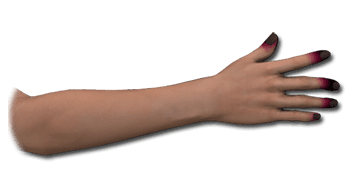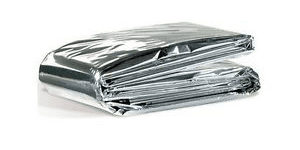
Online CPR/AED/First-Aid Class
Cold-Related Medical Emergencies
Frostbite
Frostbite occurs when exposed to extremely cold conditions. It usually happens outside in cold weather, but can also occur indoors when exposed to cold materials such as cold gasses when not properly protected.
Signs and Symptoms of Frostbite
|  |
Signs and Symptoms of Frostbite
| |
Treating Frostbite
Follow these steps to help someone suffering from frostbite:
- ● Make sure the scene is safe for both you and the person with frostbite before giving first aid
- ● Move the frostbitten person to a warm place
- ● Get a first aid kit
- ● Wear PPE
- ● Call 9-1-1
- ● Remove wet or tight clothing
- ● Pat the body dry
- ● Help the person with frostbite change into dry clothes
- ● Cover the person with frostbite in a blanket
- ● Remove tight jewelry from the affected area
CAUTION: When treating someone with frostbite, avoid the following:
- ● Do not try to thaw the frozen part of the body if you think there is a chance of the body refreezing before the person can get proper medical care
- ● Do not rub the frostbitten area, as rubbing can cause damage. If you need to touch the area, do so gently
Hypothermia (Low Body Temperature)
Low body temperature, also known as hypothermia, can occur when a person is exposed to wet or cold conditions for too long. Staying out in the snow or rain can lead to hypothermia, even if the temperature is above freezing. Hypothermia can lead to serious problems or death.
Signs and Symptoms of Hypothermia
- ● Skin that is cool to the touch
- ● Shivering (which can stop when the body’s temperature becomes too low)
- ● Personality change
- ● Confusion
- ● Sleepiness
- ● The person has a lack of concern about their condition
- ● Muscles become stiff and rigid
- ● Skin becomes cold and blue
While a person’s body temperature continues to drop, it may be difficult to tell if they are even still breathing. They may become unresponsive or appear dead, even if they are not.
Treating Hypothermia
Follow these steps to help someone with low body temperature:
- ● Make sure the scene is safe for both you and the person who has low body temperature before giving first aid
- ● Move the person to a warmer area
- ● Remove wet or tight clothing
- ● Pat the person dry
- ● Cover the person with a blanket
- ● Get a first aid kit and AED
- ● Call 9-1-1
- ● Dress the person in dry clothes. Cover the body and head but not the face using blankets, towels or even newspapers
- ● Stay with the person until someone with more advanced training arrives and can take over
- ● If the person becomes unresponsive or is not breathing normally, give CPR

Class: CPR/AED/First-Aid
Instructor: Mike Figuero
Publish Date: 2018-04-02
Last Updated: 2020-07-18
Instructor: Mike Figuero
Publish Date: 2018-04-02
Last Updated: 2020-07-18


